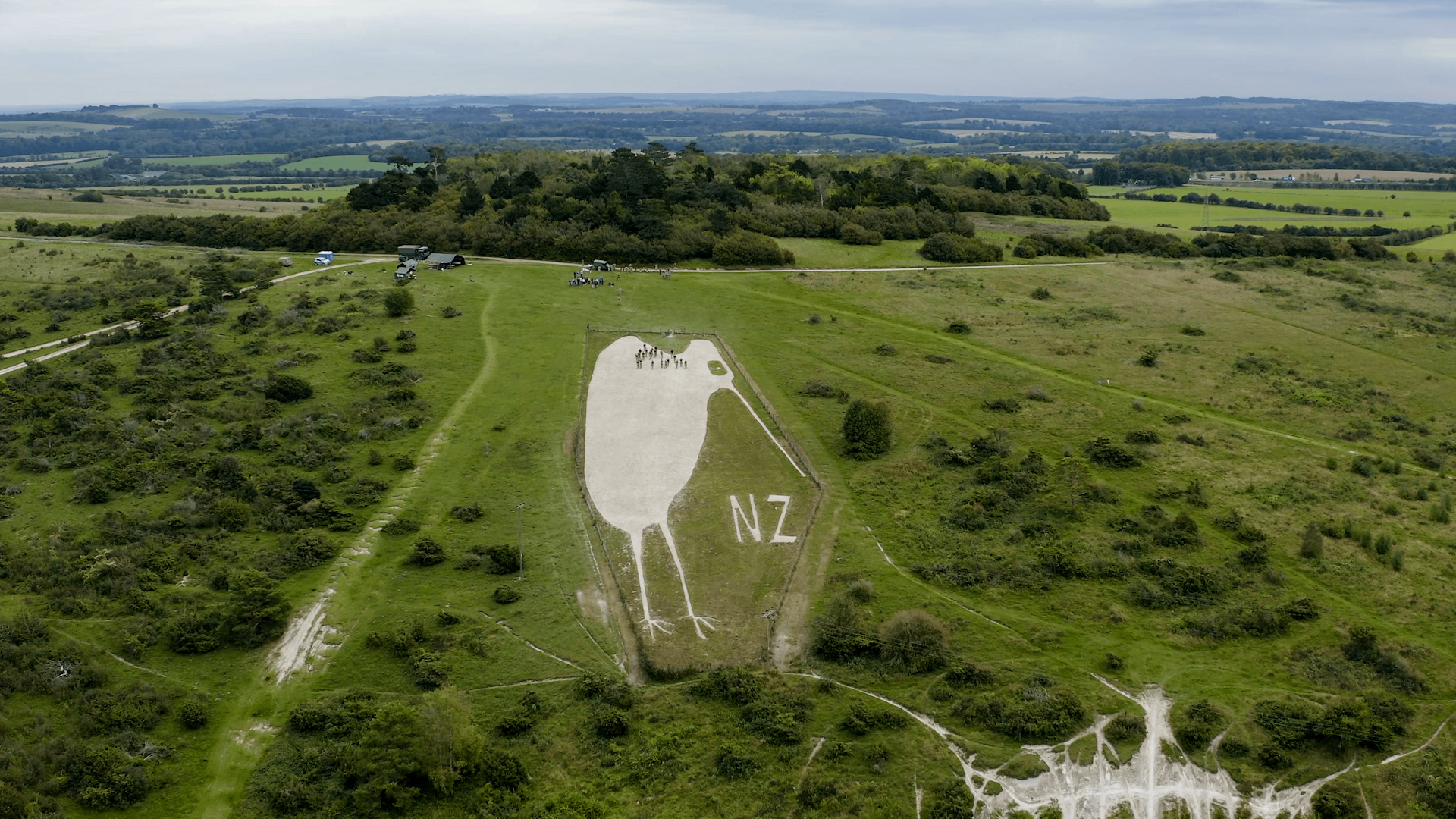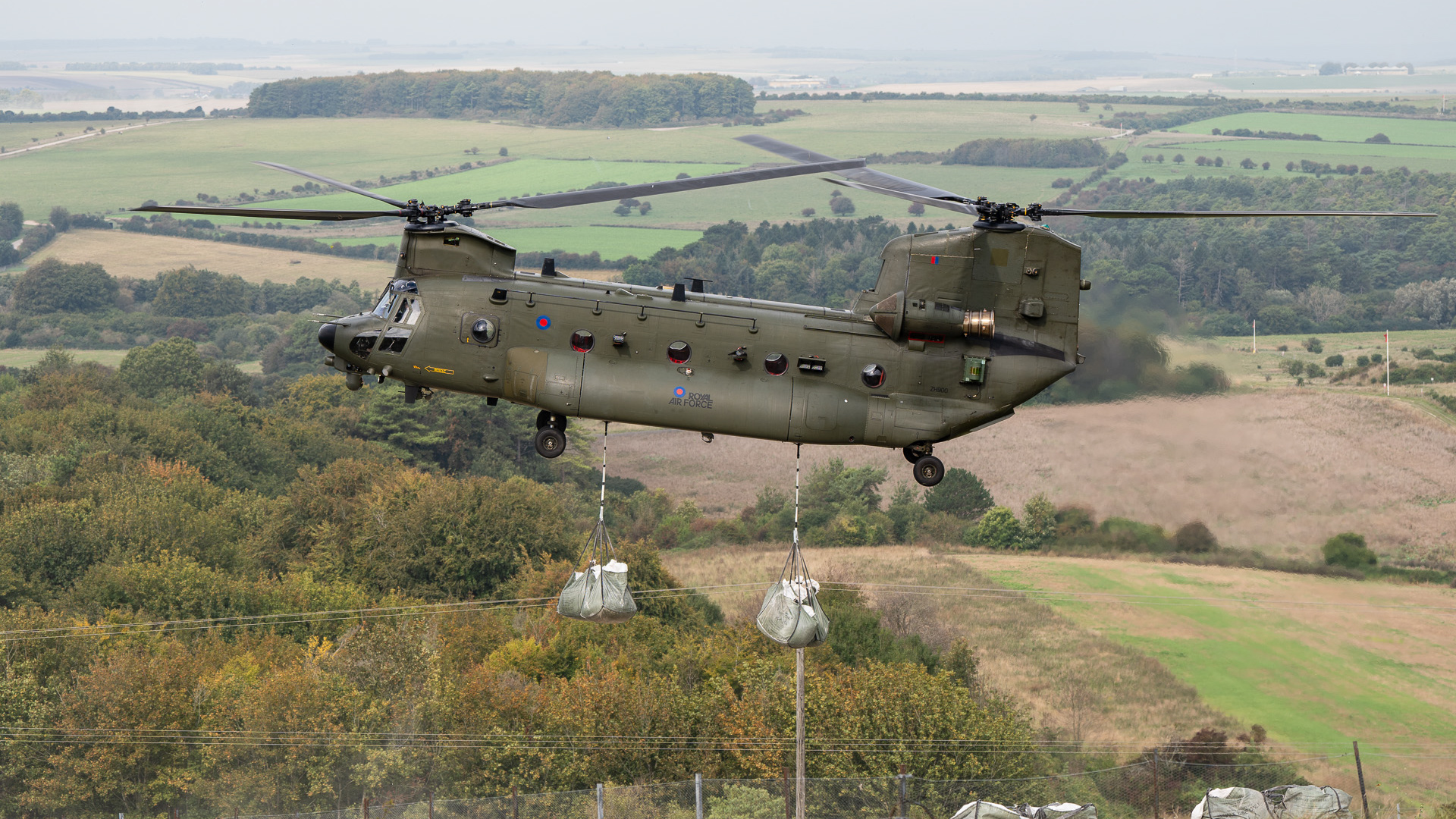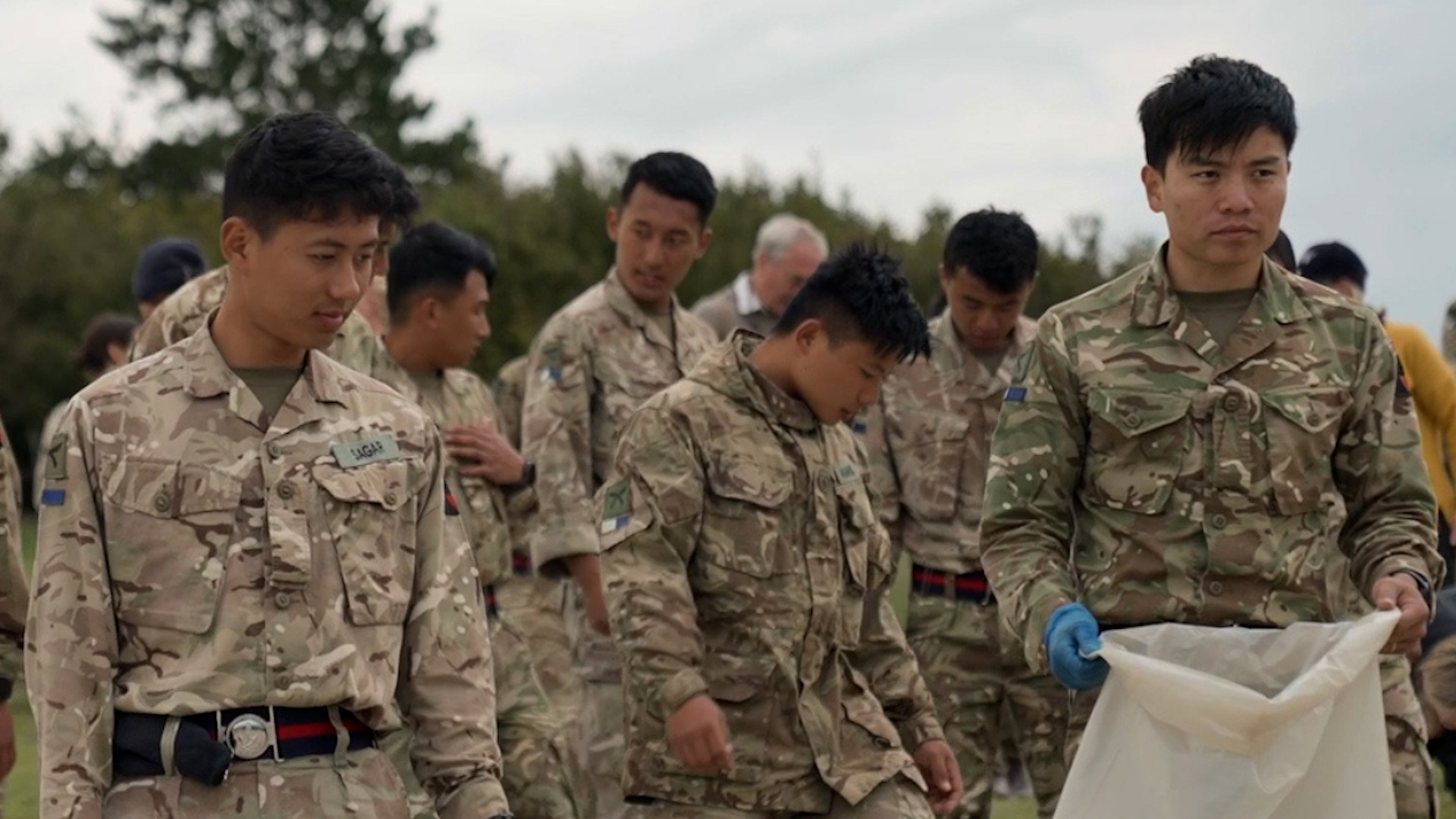
RAF Chinook chalks up successful mission to restore Bulford Kiwi

A giant kiwi that was carved into the side of a hill on Salisbury Plain by New Zealand soldiers at the end of the First World War has been restored to its full glory with some help from an RAF Chinook.
The image of the flightless bird was cut into the chalk on Beacon Hill, near Bulford in Wiltshire, in 1919 by men from the New Zealand Expeditionary Force who were waiting to return home after the war.
To help keep the Bulford Kiwi looking its best, the Chinook dropped 100 tonnes of chalk onto the site, which was then raked into place, and a traditional Maori waiata song and kukuri dance were performed.

In addition to the effort by the RAF, the restoration was a collective effort by the Defence Infrastructure Organisation, the New Zealand High Commission, local conservation groups, Landmarc and volunteers from the 3rd (UK) Division Signal Regiment and Operation Nightingale.
Operation Nightingale is an initiative to assist the recovery of wounded, injured and sick military personnel and veterans by getting them involved in archaeological investigations.

Nightingale co-founder Richard Osgood said: "Although the Bulford Kiwi is one of the youngest [chalk monuments], being constructed in 1919, it is of national and international importance, given its association with the Armed Forces of New Zealand.
"This annual re-chalking reinforces the bonds between our countries and reminds us of the sacrifices made in the First World War."
The soldiers who created the Bulford Kiwi fought in the Battle of Messines in 1917, which forced the Germans to move reserves to Flanders from the Arras and Aisne fronts, relieving pressure on the French.
The Chinook pilot was a fellow New Zealander, Flight Lieutenant James Patrick, who is in Britain on an exchange programme.
He said: "It's only since I came over to the UK … that I found out more about the Bulford Kiwi. I did know there was a chalked kiwi in the UK, but that was about it. I've flown over it a few times, which is interesting because it looks totally different from the air than it does from land.
"The fact that it was made by New Zealand soldiers waiting to go home after the First World War just makes it special. Then knowing I'm involved in restoring it, it's just awesome to be honest.
"The soldiers who made this were fighting with the British forces on the Western Front, and I think that is important for us to remember. We have these relationships and things like this are perfect for us to keep up those bonds."
The Bulford Kiwi, which measures 130m, was declared a scheduled monument in 2017, meaning it is recognised as a nationally important archaeological site and is protected from destruction or change.









